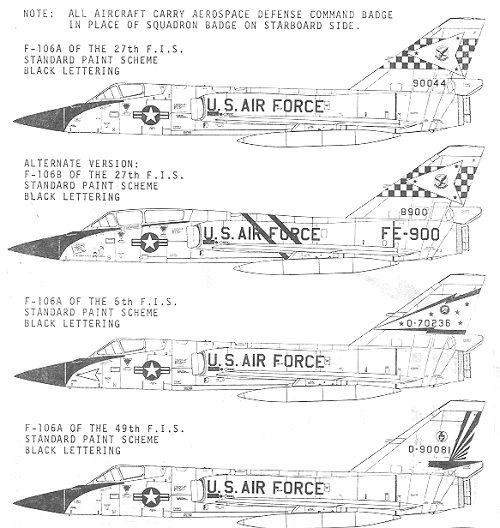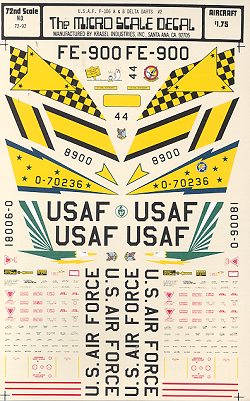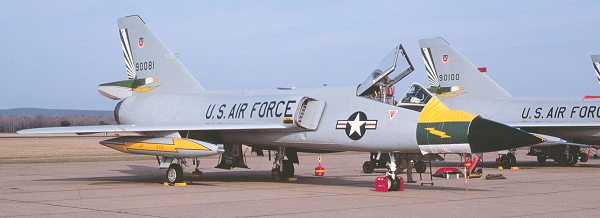
|
Sheet: |
Superscale 72-092 for the F-106A/B Delta Dart |
| Units: | see review |
|
Price |
$1.75 when new |
|
Reviewer: |

At one time, the F-106 was the epitome of USAF air power. Here was a double mach interceptor that was able to carry a wide array of air to air missiles. It was large because it had to be to carry the heavy and bulky electronic systems of the day. It also had a very thirsty engine that needed quite a bit of fuel, but also provided a ton of power. Just what was needed for an interceptor.
It was designed to replace and augment the F-101B, F-102A and in some cases, F-86L that was being used at the time. There was no pretense at being a dog fighter. Get the bombers and get them quick was the F-106's reason for being. It served well for two decades until finally being retired from active service in the mid 1980s. When the F-106 left, it was replaced by the F-15, but the writing was on the wall and Air Defense Command (ADC)was doomed. It became ADTAC (Air Defense/Tactical Air command) for a short period, but the days of the dedicated FIS (Fighter Interceptor Squadron were over) and all FIS units were disbanded. Only the 57 FIS remained in Keflavik, but with the end of the Cold War, it also went away and was disbanded in the early 1990s.
 Even when
removed from service, the F-106 lived on for a few years as the QF-106 drone.
However, there never were a lot of F-106s and soon even the drones were
expended, to be replaced by the QF-4, but that is another story.
Even when
removed from service, the F-106 lived on for a few years as the QF-106 drone.
However, there never were a lot of F-106s and soon even the drones were
expended, to be replaced by the QF-4, but that is another story.
This very old sheet contains markings for four F-106s, all in overall FS 16473 ADC grey.
Two aircraft, the first ones, are from the 27 FIS. The second is an F-106B with a fuselage band. When the F-106 left the 27 FIS, the unit went away.
Next is one from the 5 FIS. This is one of the few units to transition to the F-15 Eagle, but it also went away after only a few years.
Finally, one of, if not the last unit to operate the F-106 as an interceptor, the 49 FIS with its green and white eagle on the tail. Like the other FIS units, it is also history and when the 106 went away, so did it.

Photo taken in 1978. Cover on the nose was to keep moisture out of the the rather touchy MA-1
electronics system while the plane was on the ground. You
will also notice that the '0-' has been removed from the tail serial number and
a yellow lightning bolt has been added to the wing tanks. Photo from the
Editor's collection.
In terms of kits, you have the Hasegawa 106. It is an early second generation Hasegawa kit. Thick plastic, no cockpit or wheel well detail and in sore need of replacement. I'm surprised that Academy hasn't started on many of Hasegawa's century series planes for 'refinement'. It would be most welcome if they did!
If you would like your product reviewed fairly and quickly by a site that has well over 150,000 visitors a month, please contact me or see other details in the Note to Contributors.